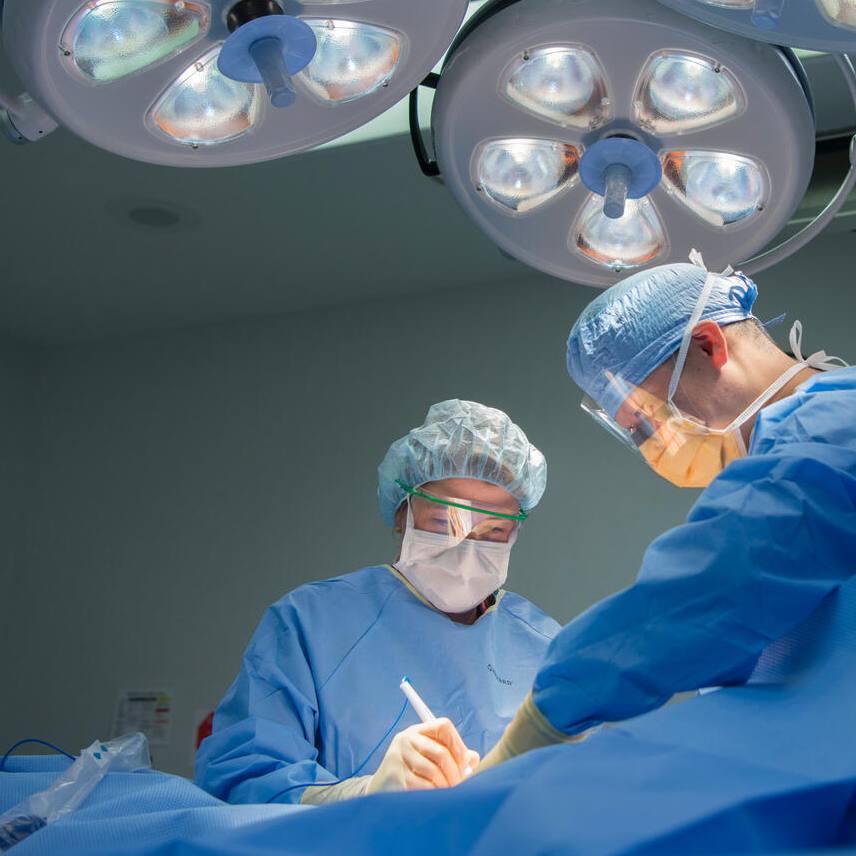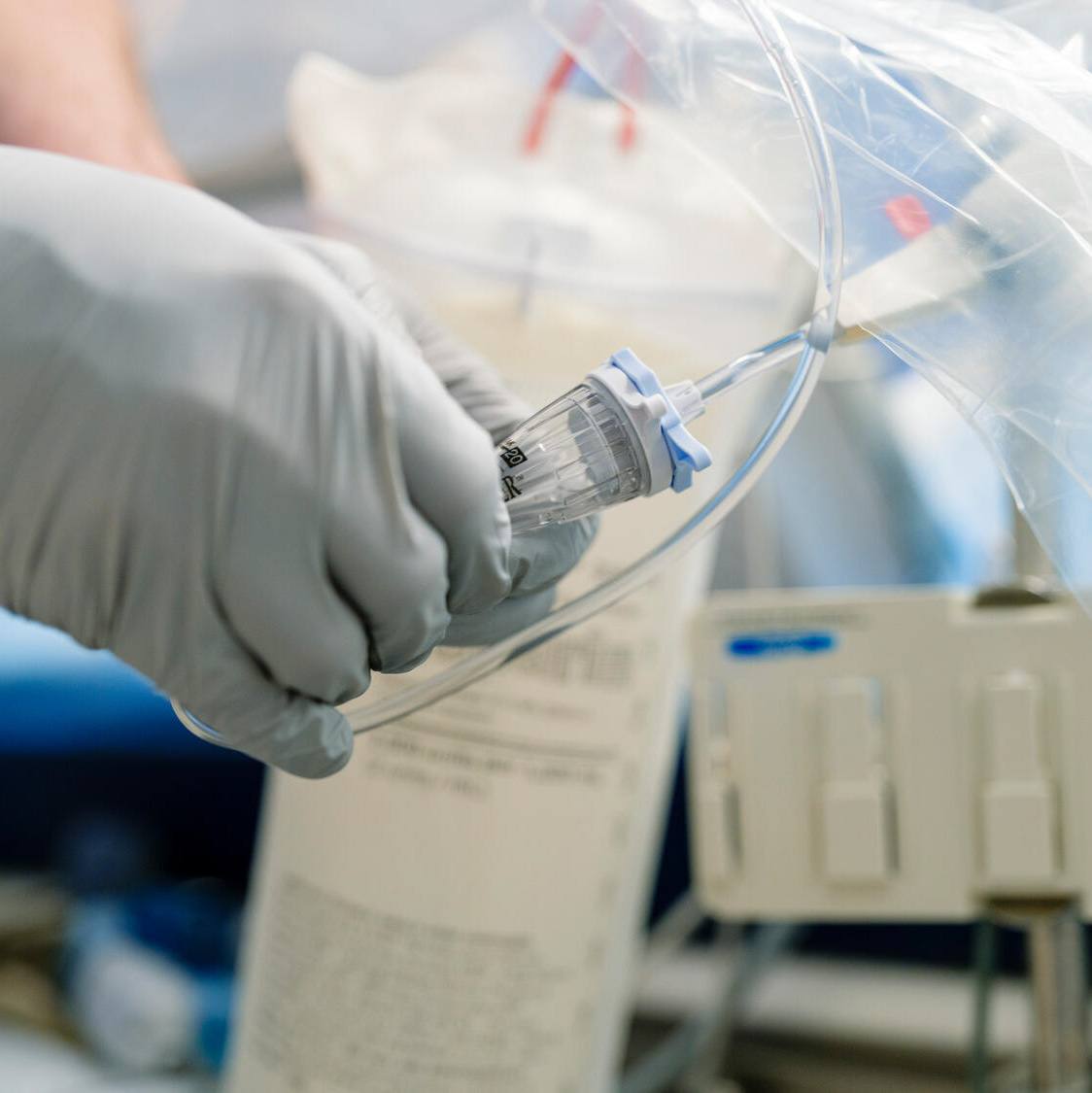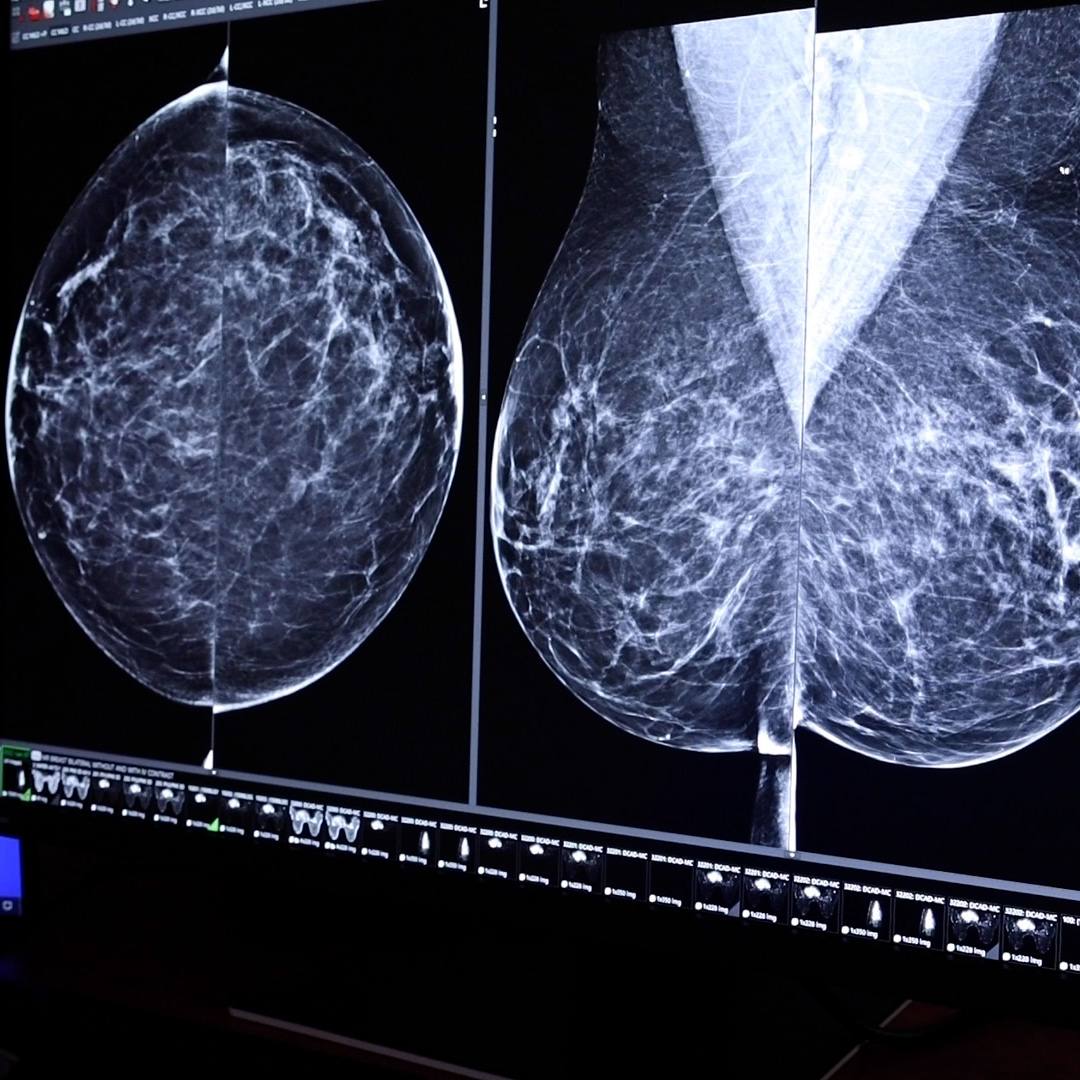-
Sharing Mayo Clinic: Brain tumors and two cancer diagnoses

As a sled dog trainer, Rick Minard has faced blizzards and subzero temperatures. But those challenges paled in comparison to facing a complicated medical situation that involved brain tumors and two cancer diagnoses. He's been able to weather it all, though, thanks to the trust he's placed in his team at Mayo Clinic.
When he was 3, Rick Minard was diagnosed with acute lymphocitic leukemia. His parents were told their son wouldn't live beyond age 4. But treatment that included radiation therapy to his head and spine for five years cured Rick and allowed the now 52-year-old to have what he describes as a "fairly normal life."
That life was upended in 2010, however, when Rick was besieged by several serious health problems — side effects from the childhood cancer treatment that had saved his life.
What began as pain in Rick's jaw eventually led to treatment for brain tumors and two types of cancer. And because his medical situation has proven to be complex, requiring a variety of specialists on his care team, Mayo Clinic has been the ideal health care facility for him.
"Rick is the perfect person for a place like Mayo where we have a multidisciplinary approach to care. I don't know how you would coordinate and manage all these conditions at several different centers to understand which one takes priority," Dr. Price says. "Here we can all communicate with each other and decide how often we need to see him and coordinate all those appointments and procedures."
The strength of that kind of coordination is not lost on Rick. "The odds were against me being here today," Rick says. "I'm so grateful for my wife and the great care I've received at Mayo Clinic."
Life interrupted
After his bout with leukemia as a young child, Rick grew up free from any significant medical concerns. He played sports as a teen, and later coached football and wrestling. While teaching high school social studies in Michigan, Rick picked up an interest in sled dogs.
"I got to live in the Upper Peninsula of Michigan with a dog musher and learned to train the dogs," Rick says. "When I was teaching, I would teach geography by way of teaching about the Iditarod in Alaska."
Rick left education in 1999 to become a trainer for sled dogs participating in the Iditarod, which is how he met his wife, Geri. Then, in 2010, Rick developed excruciating pain in his jaw. He saw dentists and oral surgeons, but the pain persisted.
In 2012, he went to see a neurologist in Marquette, Michigan, who recommended an MRI. The imaging showed Rick had several meningiomas of different sizes in his brain. His neurologist recommended surgery.
Meningiomas, the most common type of brain tumor, typically are not cancerous. That didn't ease Rick and Geri's fears.
"They didn't give us any information. It's very scary when the news is presented to you that you have multiple brain tumors, and you don't know what that really means," Rick says. "My wife and I walked out and decided we needed a second opinion. We knew people who go to Mayo Clinic regularly and asked my primary care doctor for a referral."
Reassuring care
Rick and Geri made the 10-hour drive from their home in Newberry, Michigan, to Mayo Clinic in Rochester in August 2012. There they met neurologist J. Eric Ahlskog, M.D., Ph.D., who discovered Rick had a more pressing problem than the meningiomas.
"Within 10 minutes of hearing my medical history and looking at the MRI, he pointed at the computer screen and said: 'There's a tumor in your jaw. It's probably cancer,'" Rick says. "No one else had seen the tumor in my jaw."
Dr. Ahlskog recommended Rick consult with Dan Price, M.D., an otolaryngologist and head and neck surgeon in Mayo Clinic's Head and Neck Cancer Center. When Rick and Geri met with Dr. Price, the physician explained they would need to move forward quickly, but he took time to explain the situation.
"(Dr. Price) was empathetic, and we felt at ease right away knowing that there was someone who cared and was an expert in his field."
Rick Minard
"He said it was something I needed to handle as soon as possible, and answered all our questions," Rick says. "He was empathetic, and we felt at ease right away knowing that there was someone who cared and was an expert in his field."
A biopsy confirmed the tumor was cancerous, and it would need to be surgically removed. "It was a salivary gland tumor, about 1 centimeter in size, probably caused by the radiation treatments he underwent as a child," Dr. Price says. "These types of tumors are very rare and account for a small proportion of head and neck tumors."
Dr. Price carefully outlined what surgery to remove the tumor would involve. It was daunting. "The tumor had grown around the nerve that goes to my jaw. Dr. Price explained the procedure would likely require doing reconstructive surgery on my jaw, which would be wired shut after surgery. I would need a feeding tube and wouldn't be able to talk for weeks," Rick says. "It was a lot to try and imagine."
Rick decided to move forward, despite the difficult recovery that lay ahead of him. The surgery took place Sept. 20, 2012. To Rick's relief, not only did the procedure go more smoothly than expected, the discomfort he had been living with for years disappeared.
"All the pain in my jaw was gone the minute I awoke from surgery. I could talk, and my jaw wasn't wired shut. Dr. Price said he was able to access and remove the mass through my mouth, and the margins were clean," Rick says. "If I could have hugged him, I would have. There's something deep inside that you feel when the pain you've felt for so long is in the past."
Brain matters
Once he recovered from the surgery, Rick and his care team turned their attention to the brain tumors. In March 2013, Rick met with Mayo Clinic neurosurgeon W. Richard Marsh, M.D., who recommended surgery to remove one of the tumors. "He had a meningioma in the back of the head that was large enough that it was causing brain compression," Dr. March says. "We knew we could operate on it with a high degree of safety."
After his discussion with Dr. Marsh, Rick's confidence was high. "I was in the hands of folks we trusted," Rick says. "Dr. Marsh was able to address my questions and any fears I had."
Dr. Marsh removed the large tumors from Rick's brain on May 9, 2013. Once again, recovery was smooth. Rick was in the ICU for 24 hours and went home two days later.
The following summer, as a follow-up to the surgery, Dr. Marsh recommended Rick undergo a gamma knife stereotactic radiosurgery, which uses gamma rays to deliver a precise dose of radiation to a tumor. "The tumor had originated from the wall of a blood vessel, and I was concerned that there might be residual tumor in that wall," Dr. Marsh says. "So we decided to treat it with gamma knife to prevent any future growth."
Mayo Clinic neurosurgeon Michael Link, M.D. performed the procedure in June 2014. After that, Rick continued to have MRIs every six months. All went well until fall 2015 when imaging showed one of the remaining meningiomas had grown.
"The tumor was roughly an inch in volume, and it was close to his motor strip and in danger of compressing a large draining vein," Dr. Marsh says. "The concern was that if the tumor got to be sticky, and adhered to that vein or the brain, it would increase the risk of surgical treatment in the future. We decided to take it out to prevent future growth and brain compression."
Rick had a second brain surgery in November 2015 to remove the tumor. Following that successful procedure, Rick continued to drive to Rochester for follow-ups with Dr. Price.
"I would schedule the appointments before or after the dog sled season, and Dr. Price would ask about how the races were going," Rick says. "He was always happy to see me. It's almost like seeing a good friend you haven't seen in a while."
Cancer defeated again
Rick's medical journey wasn't over, however. Several years later, in April 2018, he had a brain MRI done in Michigan that his Mayo Clinic team then evaluated. "The local radiologist said everything was fine, but Dr. Price's team called and said one of the lymph nodes in my neck was swollen," Rick says. "Dr. Price said he had to do a biopsy on the lymph node, so we drove out to Rochester."
Rick was diagnosed with yet another condition linked to his childhood cancer treatment. This time, it was cancer in his thyroid gland and the surrounding lymph nodes. "Thyroid cancer is very common, especially in people who have exposure to radiation," Dr. Price says.
"I don't think there's any course other than to have faith that these are the best people in the world for understanding and working complicated medical issues."
Rick Minard
Dr. Price told Rick that he would need to have his thyroid and multiple lymph nodes removed. "To hear they were going to cut out my thyroid caused anxiety for my wife and I," Rick says. "But Dr. Price reassured us that everything would be OK, and an endocrinologist would keep me on the right medications."
Dr. Price performed Rick's thyroidectomy on May 18, 2018. Diana Dean, M.D., a Mayo Clinic endocrinologist, then joined Rick's care team to determine the dose of the synthetic thyroid hormone he would need to take to replace the hormones his thyroid gland had produced naturally.
With this latest surgery now behind him, Rick will continue to have follow-up appointments with Dr. Price for the next nine years. He'll also undergo yearly MRIs to monitor the remaining meningiomas.

Knowing he can turn to Dr. Price and the rest of his Mayo Clinic care team at any time is a significant source of comfort for Rick. "I don't think there's any course other than to have faith that these are the best people in the world for understanding and working complicated medical issues," he says. "The great relationship I have with Dr. Price is very reassuring to me. I know no matter what happens that he will take good care of me."
To show his gratitude, and as a way of saying "thank you" for saving his life, Rick named one of the dogs he houses and trains in his kennel Doc, after Dr. Price.
"That was incredibly unique and flattering," Dr. Price says. "I'm honored that we have this connection, and that I'm able to maintain the human part in medicine."
HELPFUL LINKS
- Learn more about salivary gland tumors and meningiomas.
- Visit the Department of Otorhinolaryngology/Head and Neck Surgery.
- Check out Mayo Clinic's Head and Neck Cancer Center.
- Connect with others talking about head and neck cancer on Mayo Clinic Connect.
- Explore Mayo Clinic.
- Request an appointment.







